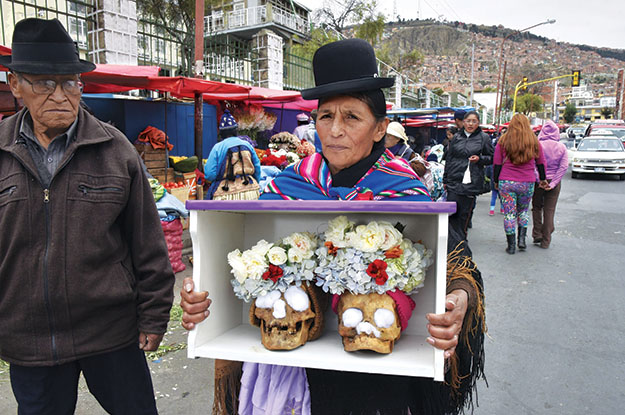Praying to a shrine featuring a real human skull may seem macabre to some. But since pre-Columbian times, inhabitants of what is now the Bolivian Altiplano have made the veneration of human skulls a central element of their spiritual life. The tradition continues to this day with an annual celebration on November 8 called Fiesta de las Ñatitas (“the little pug-nosed ones”).
The Aymara people of Bolivia add a contemporary twist. The skulls, often adorned with hats and sunglasses, are taken from the home shrines of their living owners and carried to cemeteries, where they are blessed and presented with floral crowns, cigarettes, coca leaves, candy and alcohol—all in the name of ensuring good fortune.
The earliest documented celebrations resembling today’s festival occurred in Potosí at the beginning of the 20th century. According to Paul Koudounaris, an American art historian who has attended the festival for the past decade, these early rituals involved decorating and communicating with skulls in cemeteries. Over the years and with migration from rural areas to cities, Fiesta de las Ñatitas has morphed into a blend of Catholic and indigenous beliefs, a representation of modern-day Bolivia. Today, the biggest celebration takes place in La Paz’ General Cemetery, with an estimated 12,000 participants last year.
The skulls often come from the cadavers of relatives or ancestors of the living participants—and may be as much as a century old. Others come from cemeteries or medical schools, or are passed on from friends. The original identity of the skull is less important than the distinct identity that manifests itself, said Koudounaris, which often changes as the skull gets passed to a new owner.
—
Arguinzoni is a graduate student at Columbia’s School of International and Public Affairs and a former editorial intern for AQ




